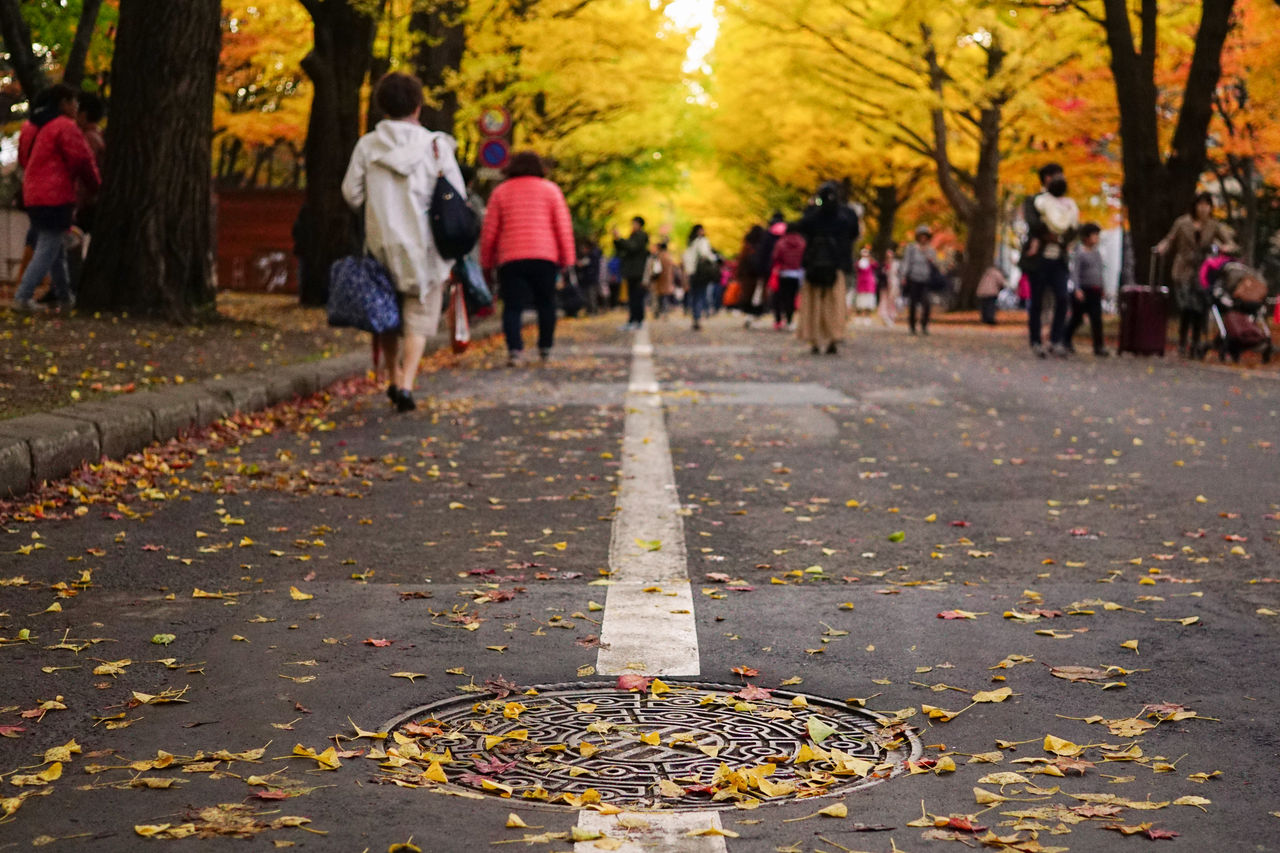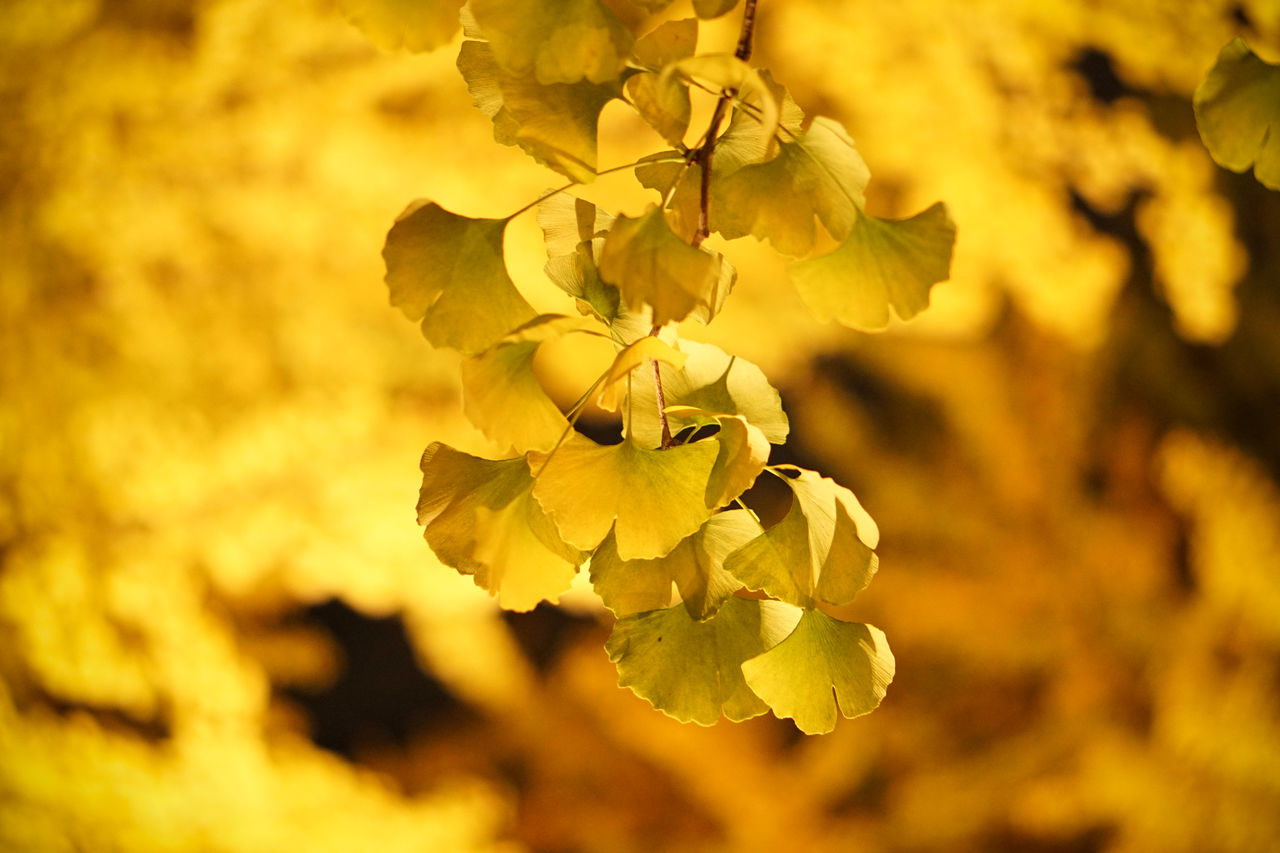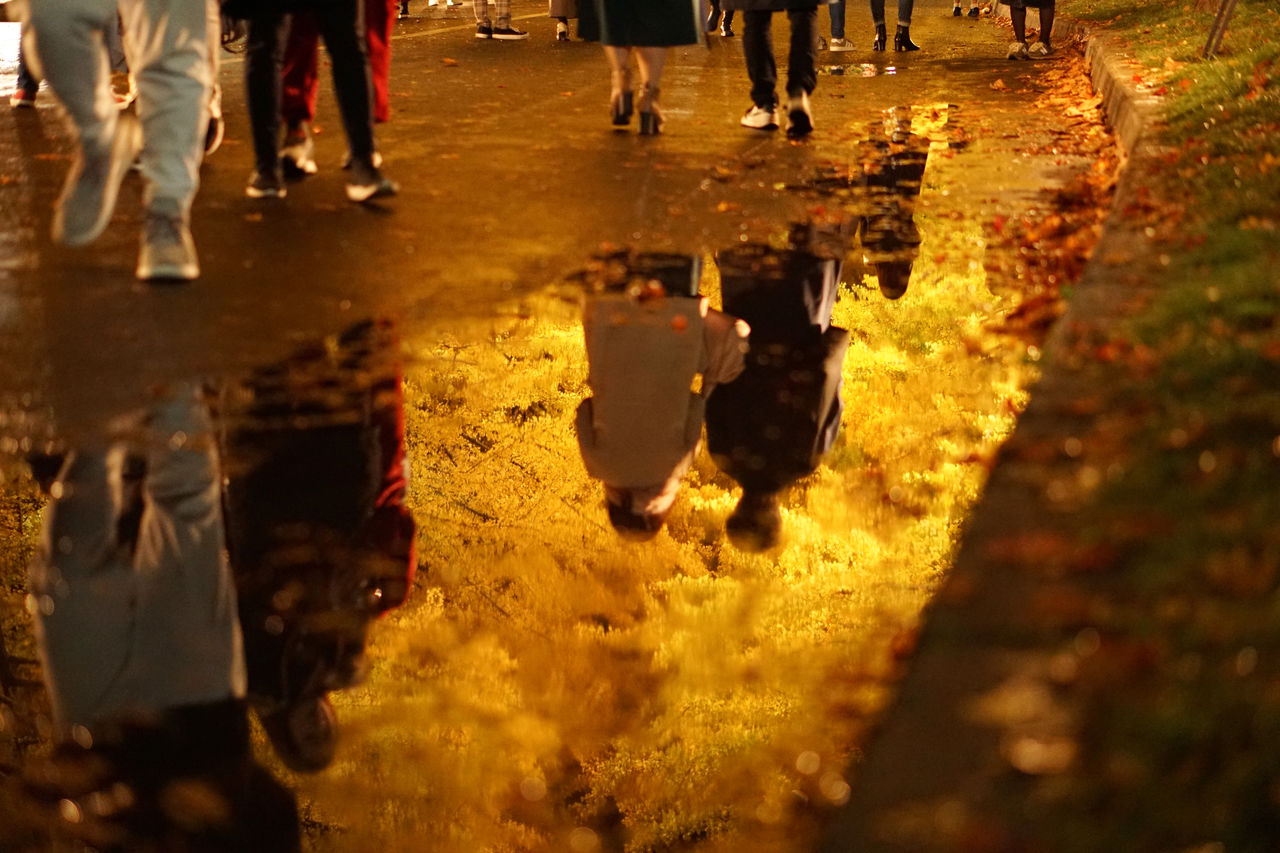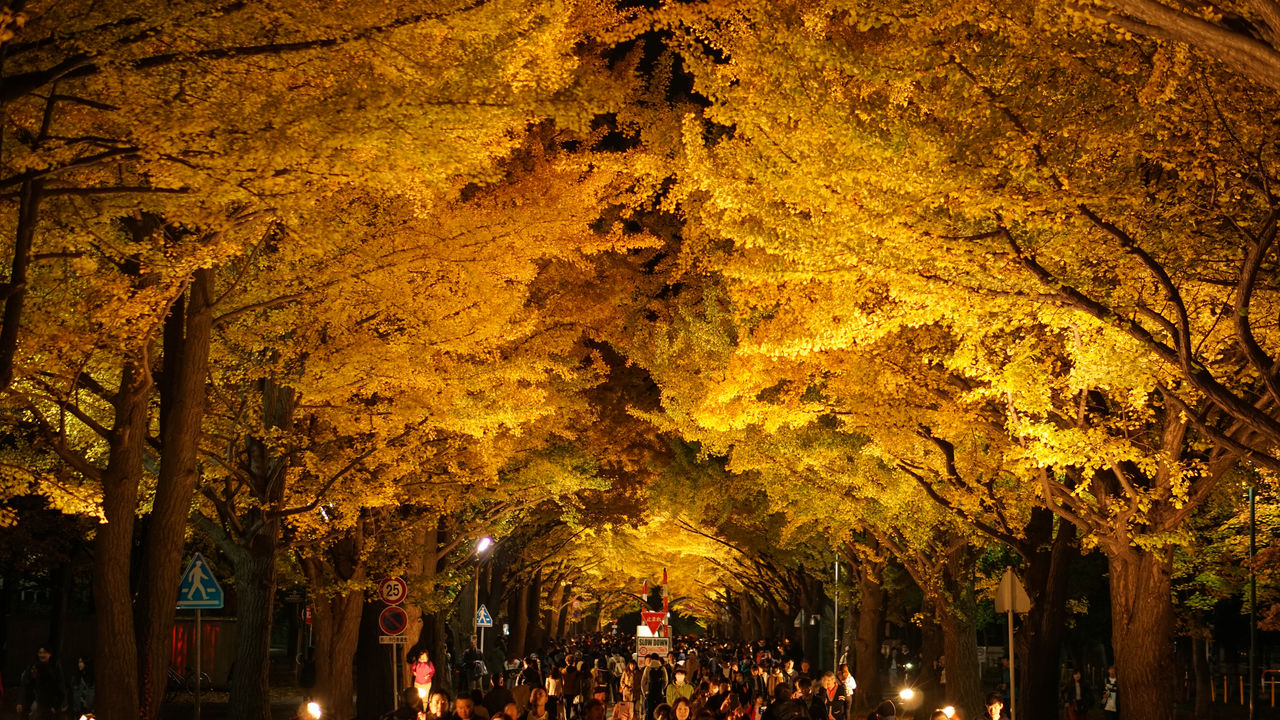
A Golden Canopy for Hokkaidō University: Lighting Up the Autumn Ginkgo Trees
Guideto Japan
Japan in Video- English
- 日本語
- 简体字
- 繁體字
- Français
- Español
- العربية
- Русский
Metropolitan structures blend into their natural surroundings in Sapporo, a harmony most clearly represented by Ōdōri Park, which extends for 1.5 kilometers east to west through the city’s central office district. Originally established in 1871 as a firebreak between the city’s government offices to the north and commercial and residential areas to the south, the area was first put to other uses beginning around 1875, with a flowerbed being planted and temporary agricultural exhibitions being staged there. Nowadays, the park is an essential oasis for Sapporo residents, as well as a major attraction for tourists visiting the city, particularly when it hosts a major portion of the Sapporo Snow Festival.
 Ōdōri Park forms the centerpiece of the Sapporo Snow Festival.
Ōdōri Park forms the centerpiece of the Sapporo Snow Festival.
The TV Tower, a local landmark, is positioned at the east end of Ōdōri Park. Between the park and Sapporo Station are such historical structures as the Clock Tower and Former Hokkaidō Government Office Building, known fondly among locals as the Red Brick Office. Both of these buildings stand as memorials to Sapporo’s pioneering days. To the south of the park is the Susukino Area, perhaps the biggest entertainment district in all of northern Japan.
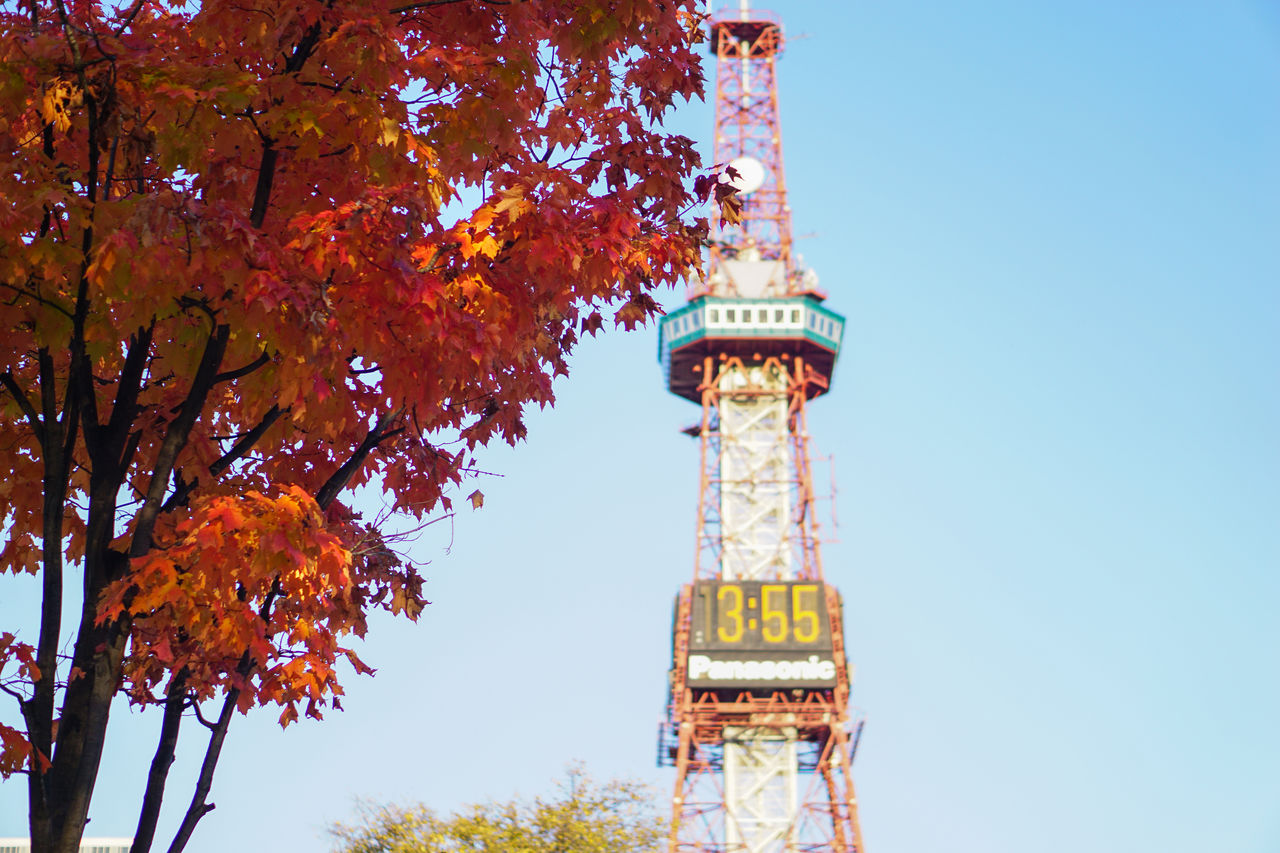 Sapporo TV Tower and autumn foliage, at the east end of Ōdōri Park.
Sapporo TV Tower and autumn foliage, at the east end of Ōdōri Park.
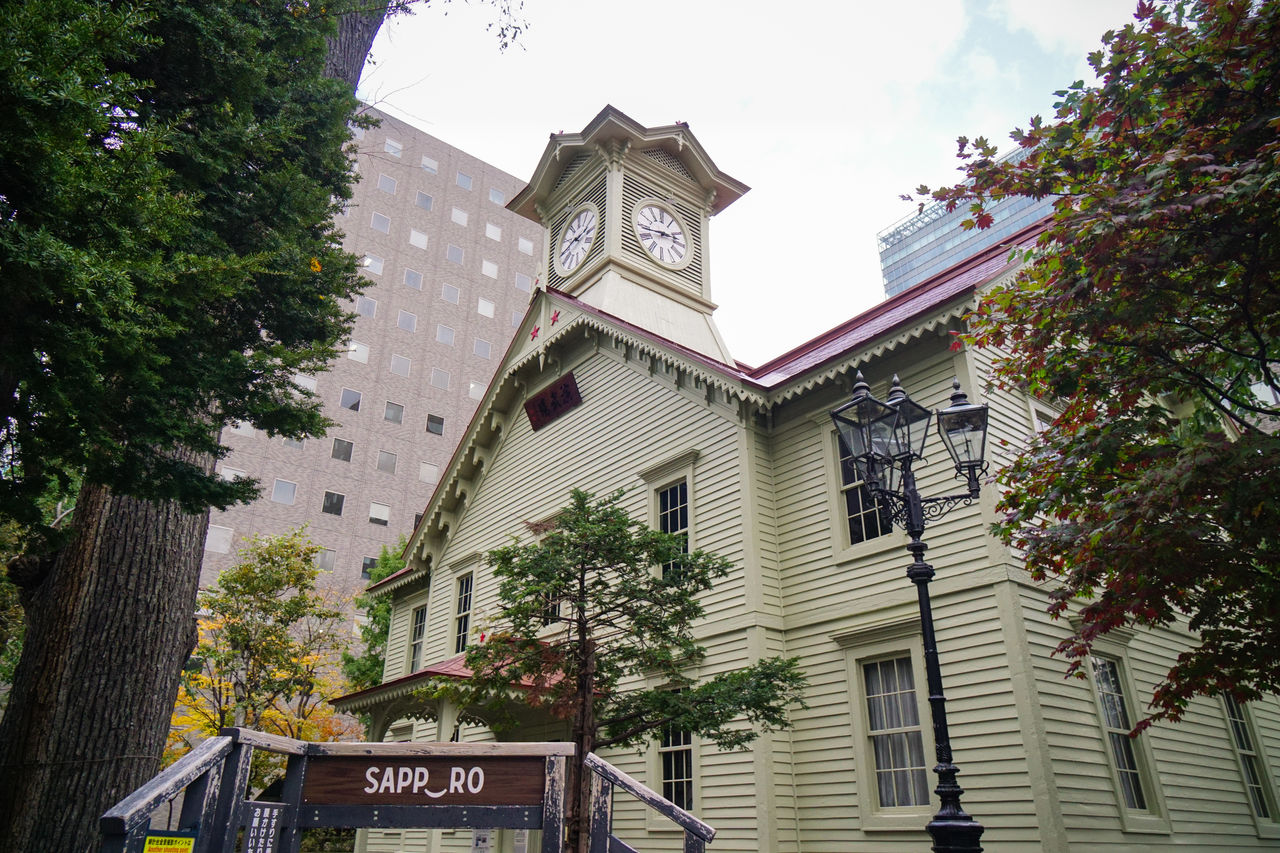 What is colloquially known as the Clock Tower is officially a former theatrical hall of the Sapporo Agricultural College, precursor to Hokkaidō University.
What is colloquially known as the Clock Tower is officially a former theatrical hall of the Sapporo Agricultural College, precursor to Hokkaidō University.
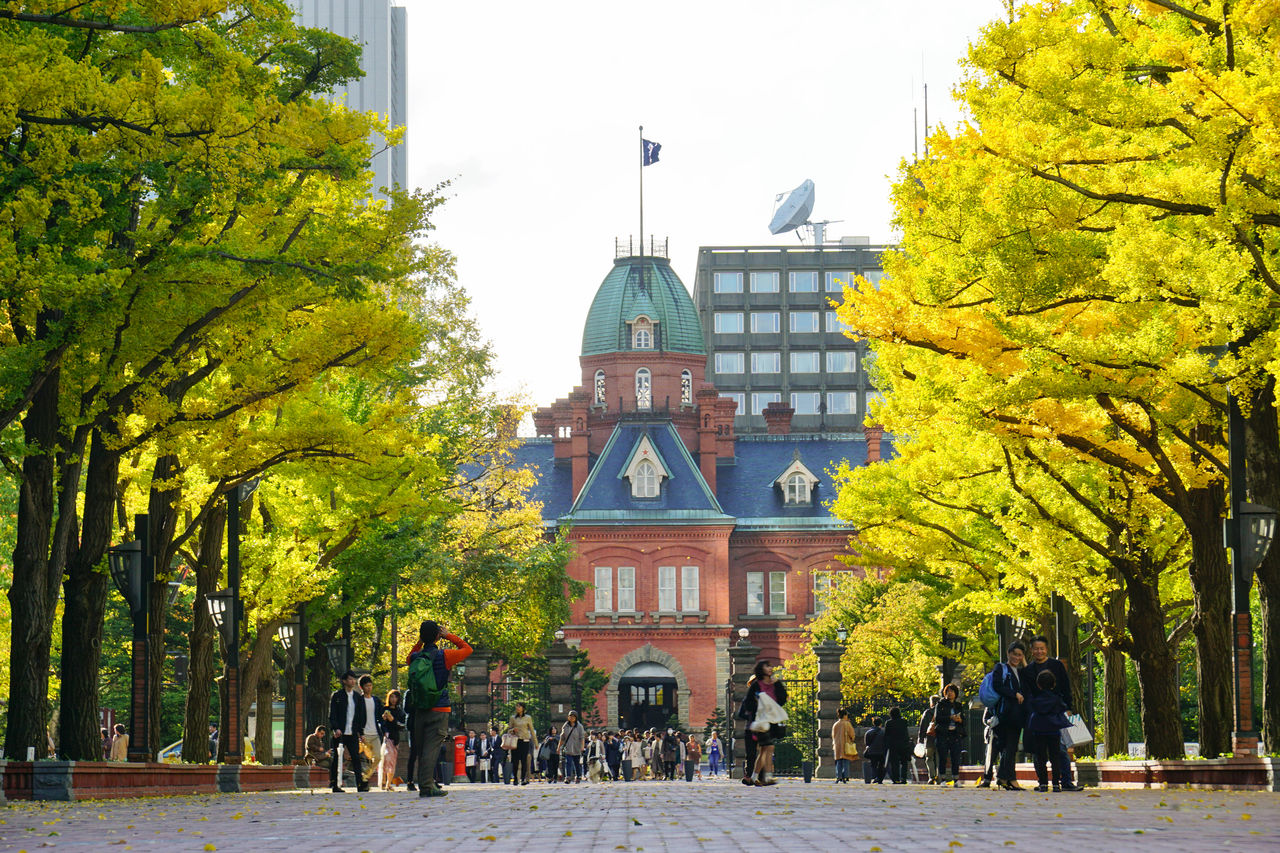 The Former Hokkaidō Government Office Building, known by the locals as the Red Brick Office.
The Former Hokkaidō Government Office Building, known by the locals as the Red Brick Office.
Ginkgo Walk: Hokkaidō University in Autumn
While all of the above sightseeing locales are clustered around the south side of Sapporo Station, there are definitely places to see out the north exit too. Due north from the west end of the station, about seven minutes’ walk along Nishi-5-chōme-dōri (Tarukawa-dōri), is the main entrance of the Sapporo Campus of Hokkaidō University, an essential part of the history of modern-day Hokkaidō. The Meiji government embarked on the development of Hokkaidō both to fend off Russian incursions and to extract resources needed to drive the modernization of Japan as a whole. Originally established as the Sapporo Agricultural College, the purpose of the eventual Hokkaidō University was to produce the personnel who would advance these objectives.
The sprawling campus is dotted with historical structures that are nationally designated important cultural assets, including the farm buildings established by William S. Clark (1826–86), the Sapporo Agricultural College’s first vice president. A stream flows through the grounds and groves and walks of trees more than 100 years old are found here and there as well, making it feel more like a municipal park than a campus.
From late October through early November, before the harsh Hokkaidō winter sets in, the ginkgo walk that starts at Kita-13-jō-dōri is popular with students, locals, and tourists alike, for being one of the best places to see autumn foliage even in Sapporo. New photos of the ginkgo walk with its golden leaves are posted daily during the season on the university’s official website. There are 70 ginkgo trees planted on both sides of the 380-meter path, making walkers feel like they are passing through a golden tunnel.
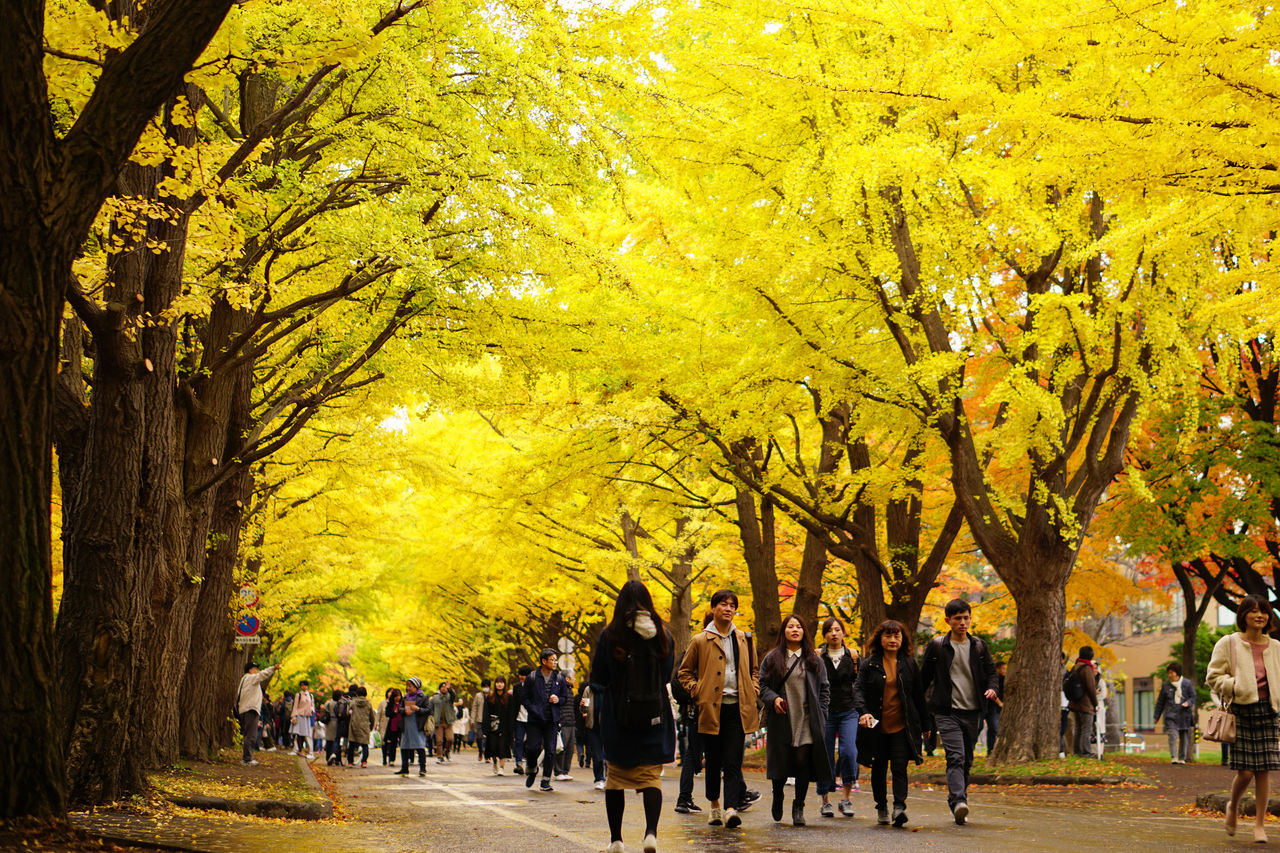 People savor this brightly colored realm before the harsh winter arrives.
People savor this brightly colored realm before the harsh winter arrives.
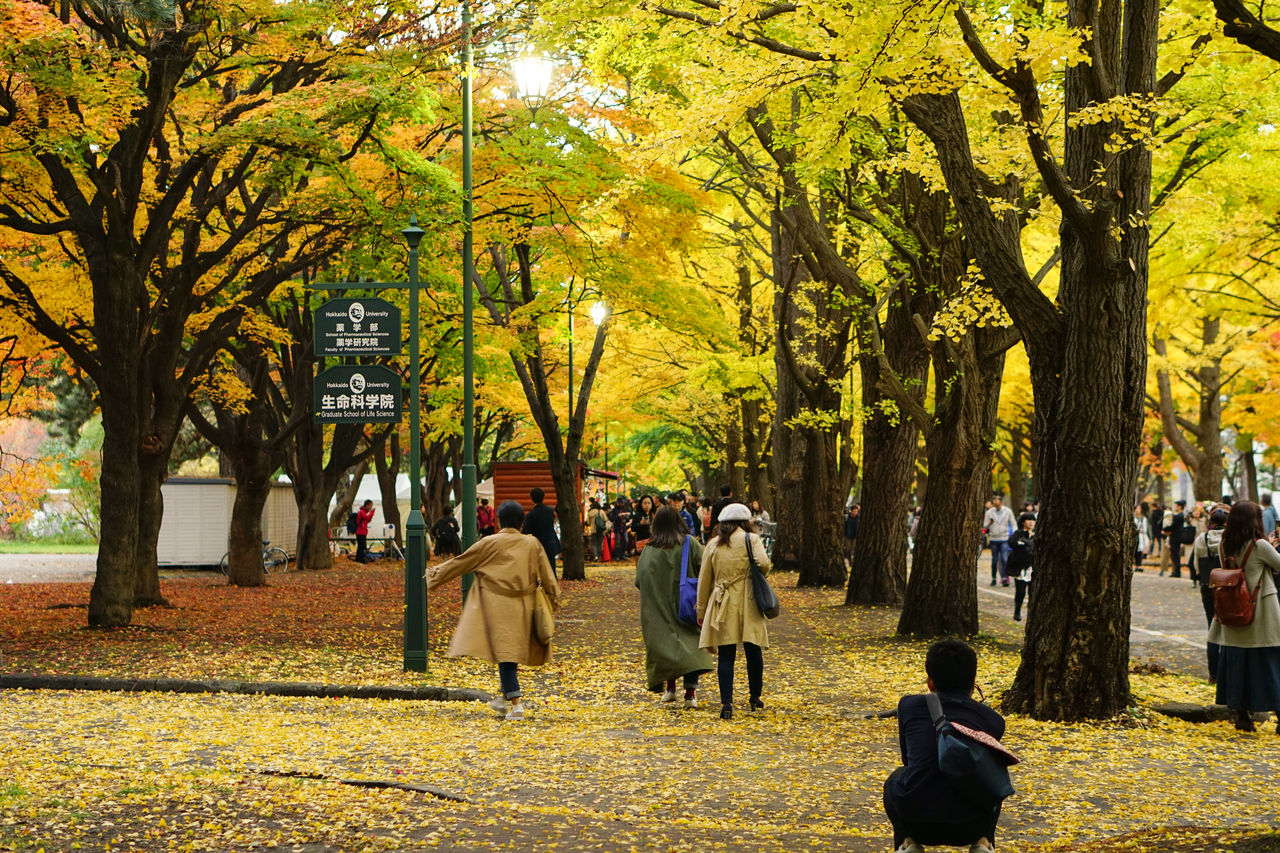 The fallen ginkgo leaves turn the paths themselves golden.
The fallen ginkgo leaves turn the paths themselves golden.
Two Days of Phantasmal Lights
Since 2012, university students have been holding a Kon’yōsai (Golden Leaves Festival) over the weekend when the leaves are at their most vivid. The festival’s organizers offer free tonjiru (pork miso soup) and oshiruko (sweet adzuki bean porridge with rice-flour dumplings) for visitors to snack on, and the trees are lit up after dusk, from 6:00 to 9:00 each evening.
At the 2018 Kon’yōsai, which took place on October 27–28, many people visited the ginkgo walk hoping to experience autumn in Sapporo, in the midst of intermittent rain. This year also saw the first use of LED floodlights in select areas to light the trees in rainbow colors, delighting observers with phantasmal visions.
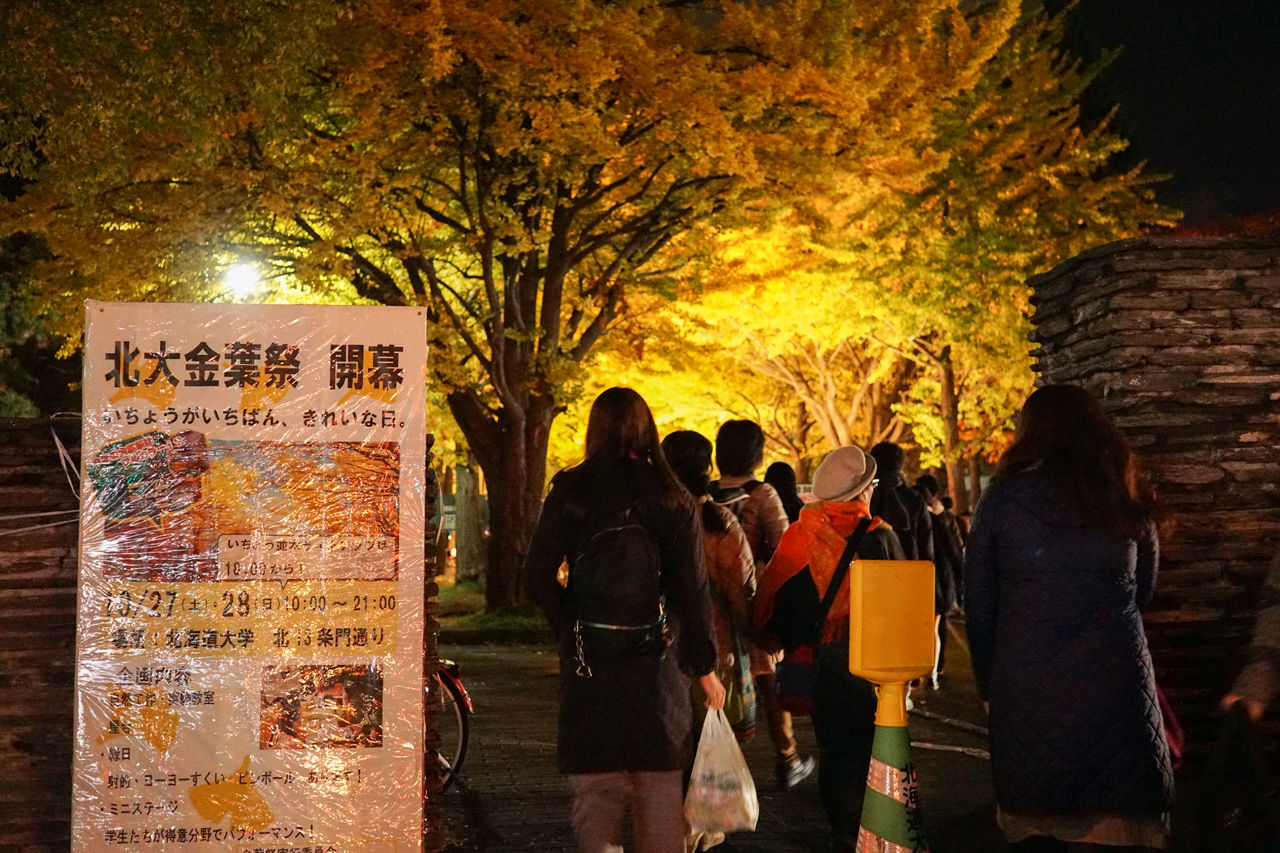 A clearly handmade sign to welcome visitors puts the student-run stamp on this event.
A clearly handmade sign to welcome visitors puts the student-run stamp on this event.
 The golden tunnel seems to go on and on.
The golden tunnel seems to go on and on.
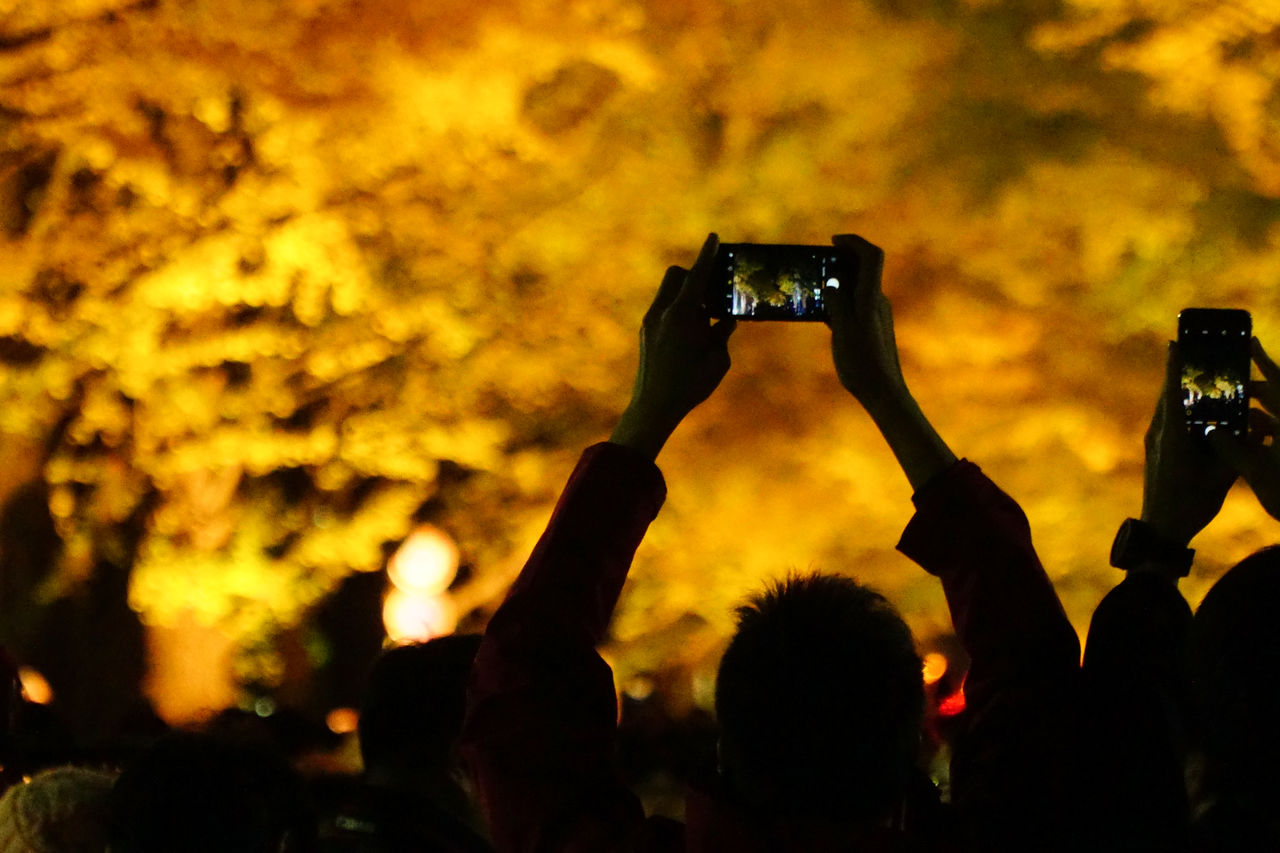 Visitors capture the colors with their smartphones, but no photography beats the real thing.
Visitors capture the colors with their smartphones, but no photography beats the real thing.
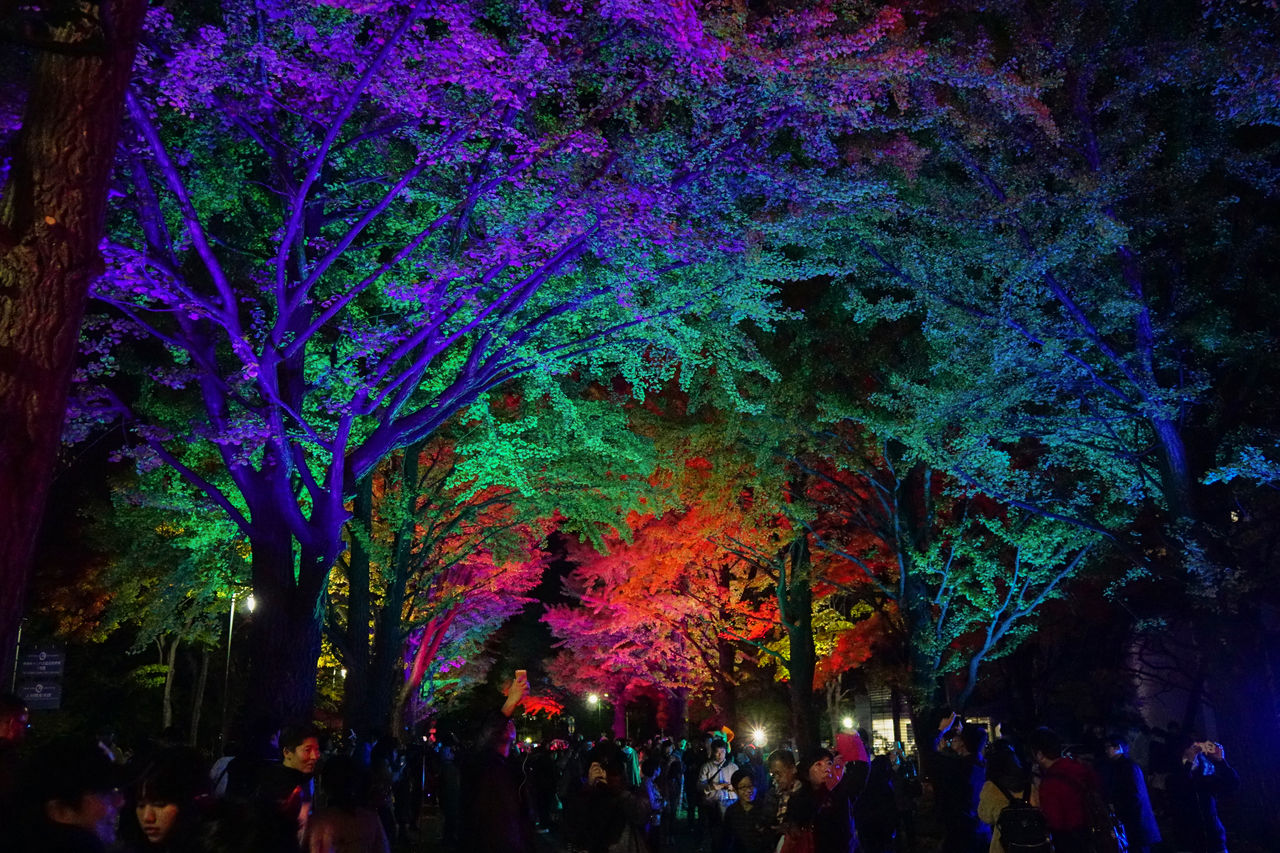 Visitors capture the colors with their smartphones, but no photography beats the real thing.
Visitors capture the colors with their smartphones, but no photography beats the real thing.
Access: 7 minutes’ walk from the North Exit of JR Sapporo Station to the main gate of Hokkaidō University, then another 7 minutes north from the main gate to the ginkgo walk; or 4 minutes’ walk from Kita-jūni-jō station on the Namboku Subway Line (one stop past Sapporo Station) to the ginkgo walk
(Originally published in Japanese. Photos and video by Maeda Akihiro. Banner photo: The Hokkaidō University ginkgo walk, lit up at night.)
